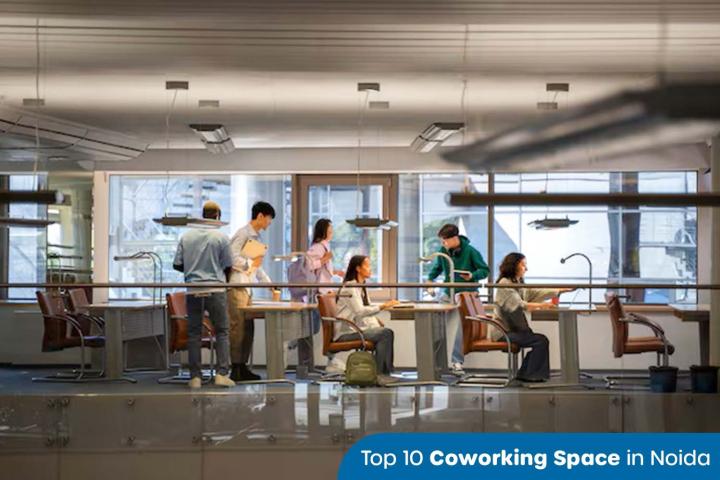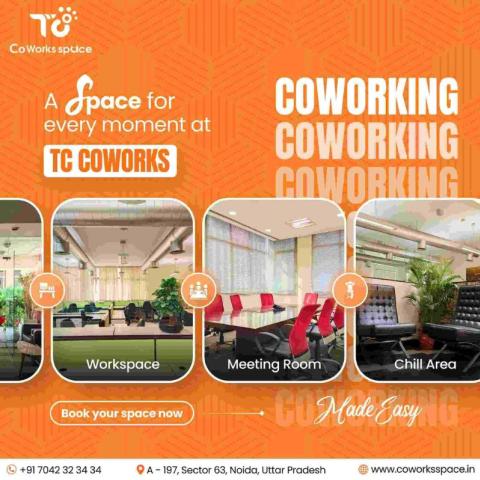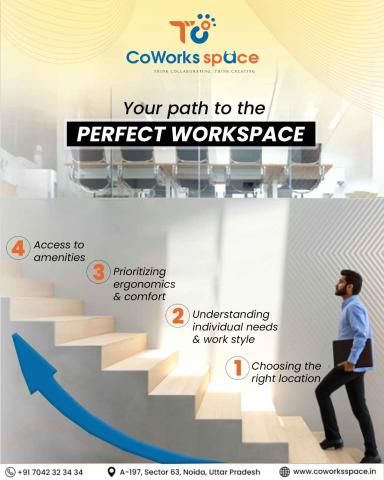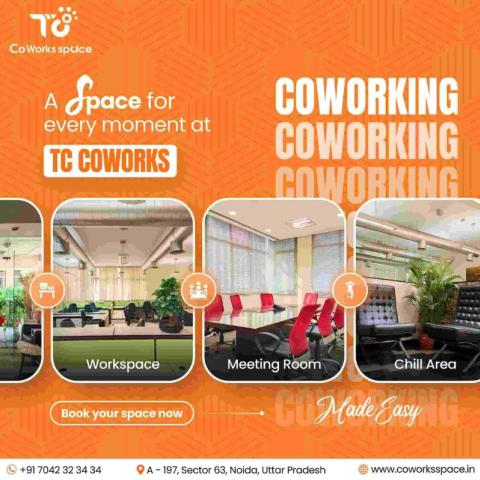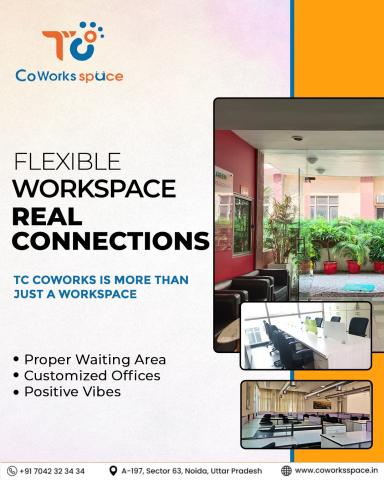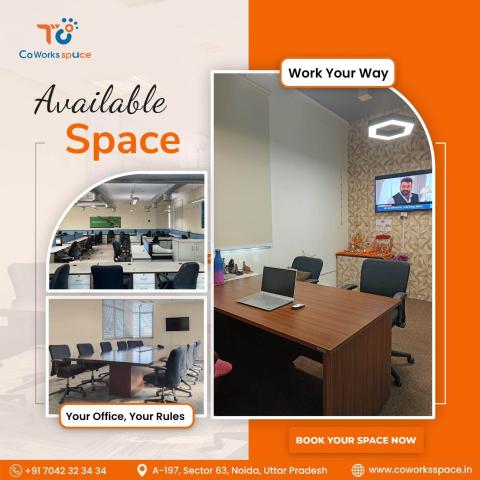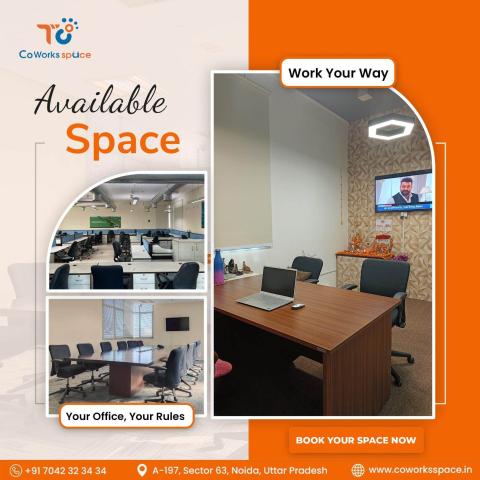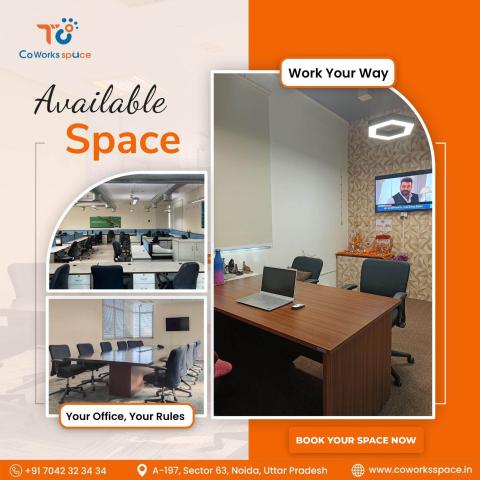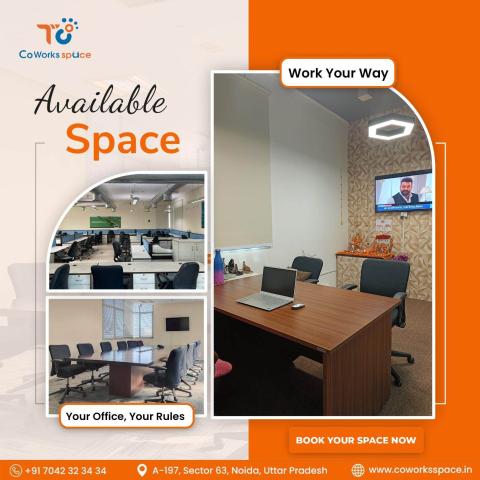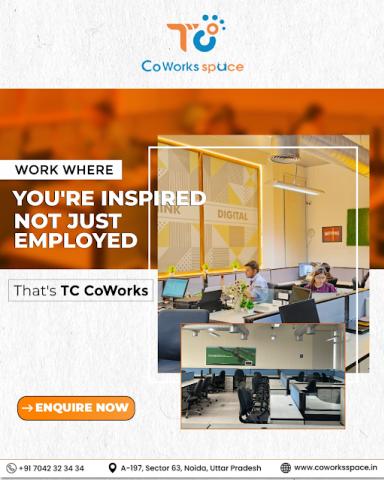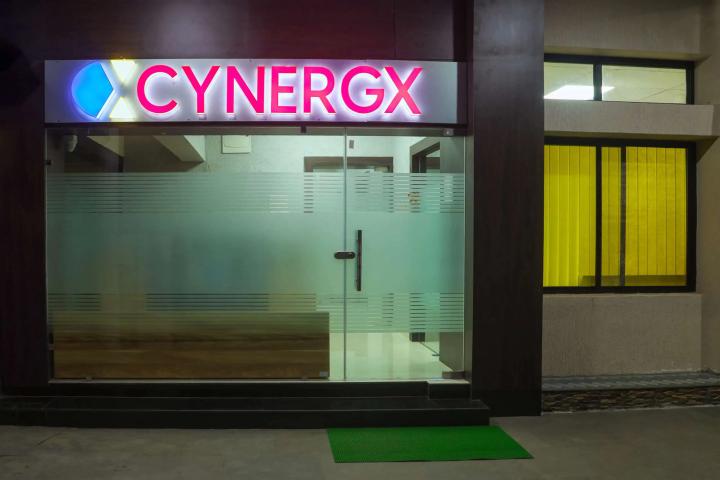The old paradigm of working alone is quickly becoming outdated in today's dynamic and linked economic environment. Businesses from a variety of sectors are realizing the enormous benefits of collaborative workspaces, where people can congregate, exchange ideas, and work together to spur success and innovation. Collaborative workplaces help teams reach their maximum potential, promote knowledge sharing, and create a sense of community. This blog explores the many advantages of collaborative workspaces and how teamwork fosters creativity, productivity, and corporate expansion.
1. Enhanced Communication and Information Flow:
Collaborative workspaces transcend the limitations of traditional communication channels, fostering an environment where information flows freely and organically. By bringing individuals together in a shared physical or virtual space, these environments facilitate spontaneous interactions, impromptu discussions, and the seamless exchange of ideas. This open communication fosters transparency, strengthens team cohesion, and ensures that everyone is on the same page, working towards common goals.
Furthermore, collaborative spaces often incorporate tools and technologies that streamline communication, such as shared digital platforms, instant messaging systems, and video conferencing capabilities. These tools enhance the speed and efficiency of information sharing, ensuring that teams are always up-to-date and well-informed. The physical proximity of team members in a collaborative workspace also allows for non-verbal cues and body language to play a role in communication, adding another layer of understanding and connection. This is particularly valuable in dynamic environments like coworking spaces in Singapore, where diverse individuals and teams converge.
2. Increased Creativity and Innovation:
When individuals from diverse backgrounds and perspectives come together in a collaborative workspace, the potential for creativity and innovation skyrockets. The cross-pollination of ideas, the challenging of assumptions, and the blending of different approaches lead to novel solutions, out-of-the-box thinking, and breakthroughs that would be impossible to achieve in isolation. Collaborative workspaces act as incubators for creativity, fostering an environment where experimentation and risk-taking are encouraged.
The shared space becomes a canvas for brainstorming, idea mapping, and collaborative problem-solving. Whiteboards, shared screens, and collaborative software facilitate the visual representation of ideas, making them tangible and accessible to the entire team. Moreover, the diverse perspectives present in a collaborative workspace challenge individuals to think outside their usual frameworks, leading to more innovative and well-rounded solutions. This is especially beneficial in startup coworking spaces, where the free flow of ideas is essential for early-stage ventures.
3. Improved Problem-Solving and Decision-Making:
Complex problems often require a multi-faceted approach, drawing on the expertise and insights of individuals with different skill sets. Collaborative workspaces provide the ideal setting for tackling such challenges, allowing teams to pool their knowledge, brainstorm solutions, and arrive at well-informed decisions. The collective intelligence of a group, facilitated by a collaborative environment, leads to more robust and effective problem-solving strategies. A structured approach is frequently used in collaborative problem-solving, where team members assume designated roles and duties. This division of labor guarantees that every facet of the issue is taken into account and that each person gets an opportunity to share their knowledge. A collaborative workspace's open communication channels provide real-time feedback and adjustments, keeping the team on course and enabling them to come up with the optimal solution. This is particularly valuable when utilizing meeting rooms for rent for focused problem-solving sessions.
4. Enhanced Productivity and Efficiency:
Contrary to the notion that collaboration can lead to distractions and decreased productivity, research suggests that collaborative workspaces can actually boost efficiency. When individuals work together, they can leverage each other's strengths, divide tasks effectively, and provide mutual support and motivation. This synergy leads to streamlined workflows, reduced duplication of effort, and ultimately, increased productivity.
In a collaborative environment, individuals are more likely to stay focused and engaged, knowing that their contributions are valued and that they are part of a larger team working towards a common goal. The shared space also provides opportunities for quick check-ins and feedback, preventing misunderstandings and ensuring that everyone is working efficiently. This is a key advantage of flexible coworking spaces, where individuals can adapt their work environment to maximize productivity.
5. Stronger Team Cohesion and Morale:
Collaborative workspaces foster a sense of belonging and camaraderie among team members. By working together in a shared space, individuals develop stronger relationships, build trust, and cultivate a sense of shared purpose. This increased team cohesion leads to higher morale, greater job satisfaction, and reduced employee turnover. The social interactions that occur naturally in a collaborative workspace contribute to a positive and supportive team culture. Team members are more likely to celebrate successes together, offer support during challenging times, and build lasting bonds that extend beyond the workplace. This is especially valuable in best co working spaces in Singapore, where a strong sense of community is often fostered.
6. Increased Learning and Skill Development:
Collaborative workspaces provide fertile ground for learning and skill development. By working alongside colleagues with different expertise, individuals can gain new knowledge, acquire new skills, and expand their professional horizons. The informal mentorship and knowledge sharing that occur naturally in collaborative environments contribute to continuous learning and professional growth.
Collaborative spaces often host workshops, seminars, and training sessions, providing further opportunities for skill development and knowledge enhancement. The open communication channels in a collaborative workspace also allow individuals to ask questions, seek feedback, and learn from their colleagues' experiences. This is a significant benefit of being part of a thriving coworking community, especially in best coworking spaces that prioritize learning and development.
7. Greater Adaptability and Agility:
In today's rapidly changing business environment, organizations need to be adaptable and agile to thrive. Quick communication, quick decision-making, and the capacity to quickly change course in response to new possibilities or difficulties are all made possible by collaborative workspaces, which encourage adaptability and responsiveness.
Organizations can efficiently manage change and stay ahead of the curve because of this adaptability. Collaborative teams are better equipped to handle unexpected events and adapt to changing market conditions. The shared understanding and trust that develop in a collaborative workspace allow teams to react quickly and make informed decisions, minimizing disruption and maximizing opportunities. This adaptability is a key feature of flexible coworking space solutions, allowing businesses to scale their workspace as needed.
8. Improved Customer Service and Satisfaction:
Collaborative workspaces can lead to improved customer service and satisfaction by breaking down silos between departments and fostering a more customer-centric approach. When teams work together seamlessly, they can respond to customer inquiries more efficiently, resolve issues more effectively, and provide a more cohesive and satisfying customer experience.
Collaborative workspaces often incorporate customer feedback mechanisms, allowing teams to stay informed about customer needs and preferences. This feedback loop enables teams to continuously improve their products, services, and customer service strategies. This customer-centric approach is often emphasized in the best coworking spaces that cater to businesses focused on client relationships.
9. Reduced Stress and Burnout:
Working in isolation can be isolating and stressful. Collaborative workspaces offer a supportive environment where individuals can share their challenges, seek advice, and receive encouragement from their colleagues. This sense of community and shared responsibility can help reduce stress, prevent burnout, and promote overall well-being.
Collaborative spaces often provide amenities and resources that support employee well-being, such as comfortable break areas, fitness facilities, and access to mental health resources. The social interactions and support network available in a collaborative workspace can also help individuals manage stress and maintain a healthy work-life balance.
10. Attracting and Retaining Top Talent:
In today's competitive job market, attracting and retaining top talent is crucial for organizational success. Collaborative workspaces are increasingly seen as a desirable perk, offering employees the opportunity to work in a dynamic and stimulating environment, connect with colleagues, and contribute to meaningful projects.
Offering collaborative workspaces can give organizations a competitive edge in attracting and retaining top talent. Collaborative spaces often offer a variety of work settings, allowing individuals to choose the environment that best suits their needs and preferences. This flexibility and autonomy can be a major draw for top talent seeking a more personalized and fulfilling work experience.
11. Fostering a Culture of Innovation:
A societal trend toward transparency, cooperation, and creativity is reflected in collaborative workspaces, which go beyond simple physical proximity. Organizations may cultivate an innovative culture that propels ongoing development and progress by establishing a setting where concepts are freely exchanged, difficulties are welcomed, and experimentation is welcomed. Events, workshops, and hackathons that promote creativity and invention are frequently held in collaborative settings. These gatherings of people from many disciplines and backgrounds provide chances for ideas to be shared and creative solutions to be developed.
12. Supporting Diversity and Inclusion:
Collaborative workspaces can play a vital role in promoting diversity and inclusion within organizations. By bringing together individuals from different backgrounds, cultures, and perspectives, these environments foster understanding, empathy, and respect.
This inclusivity leads to richer discussions, more creative solutions, and a stronger sense of belonging for all employees. Collaborative spaces can be designed to be accessible and inclusive, catering to the needs of individuals with diverse abilities and backgrounds. The open communication and shared experiences in a collaborative workspace can help break down barriers and promote a more inclusive and welcoming environment for all.
Integrating Collaborative Workspaces in Singapore
For businesses in Singapore seeking to embrace the benefits of collaborative workspaces, there are numerous options available. Coworking spaces in Singapore have grown in popularity, offering flexible and cost-effective solutions for businesses of all sizes. Whether you're a startup looking for a startup coworking space, a growing team seeking a flexible coworking space, or a company in need of meeting rooms for rent, Singapore's coworking landscape offers a diverse range of choices.
When choosing a coworking space in Singapore, consider factors such as location, amenities, community, and pricing. Some of the best coworking spaces in Singapore include:
Workbuddy: Offers access to a vast network of best co working spaces in singapore, providing ultimate flexibility and choice.
WeWork: Provides stylish and vibrant coworking spaces with a strong community focus.
The Great Room: Offers premium coworking spaces with a focus on design and hospitality.
JustCo: Provides a variety of coworking spaces across Singapore, catering to different needs and budgets.
By carefully selecting the best coworking space for your needs, you may maximize the benefits of teamwork and propel your company to new heights of success.
In conclusion, collaborative workspaces offer a powerful engine for driving success in today's business world. By fostering communication, creativity, and teamwork, these environments empower organizations to innovate, solve problems effectively, and achieve their goals. Organizations hoping to prosper in the twenty-first century and beyond will need to embrace the concepts of collaboration and make investments in collaborative workspaces as the workplace continues to change.


